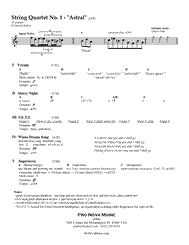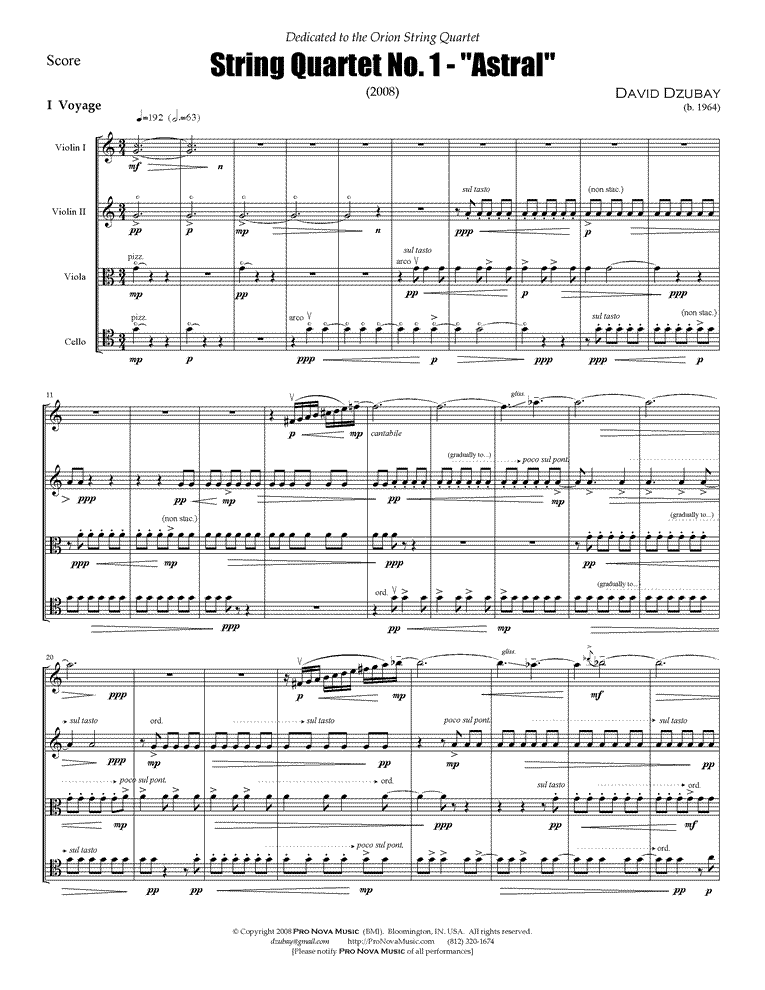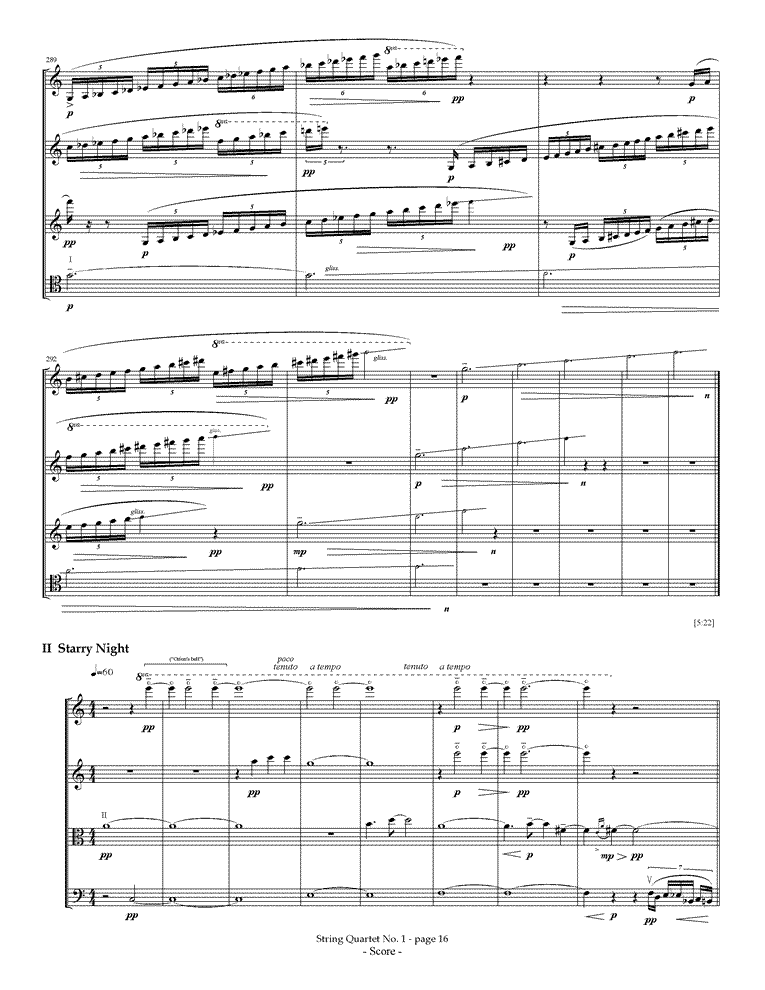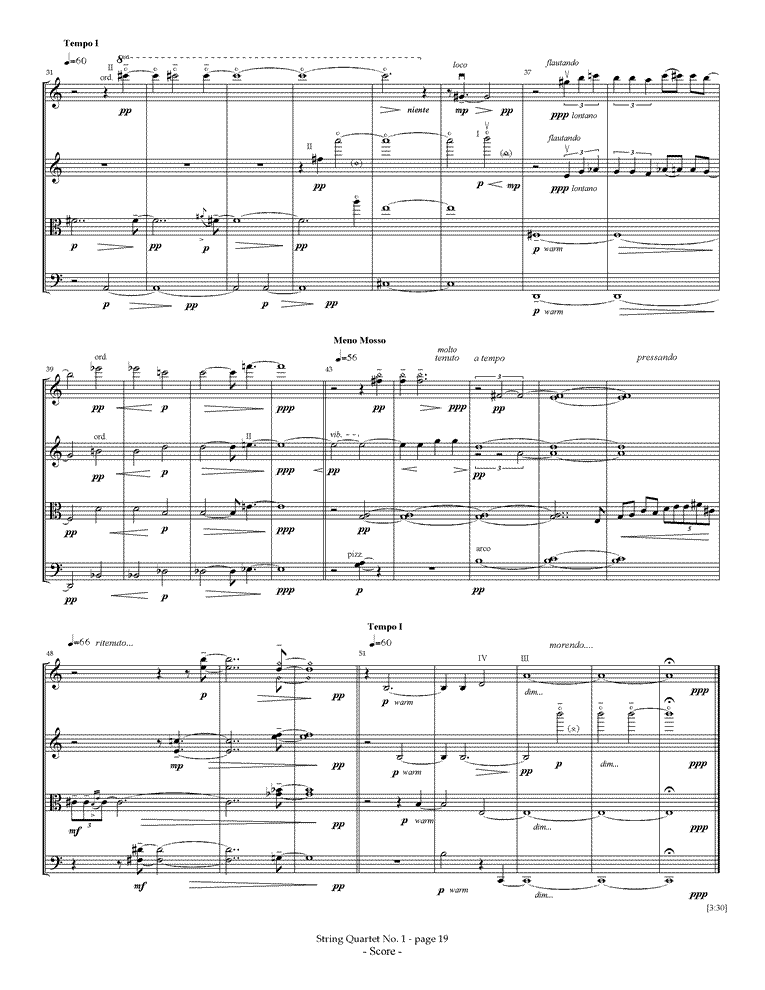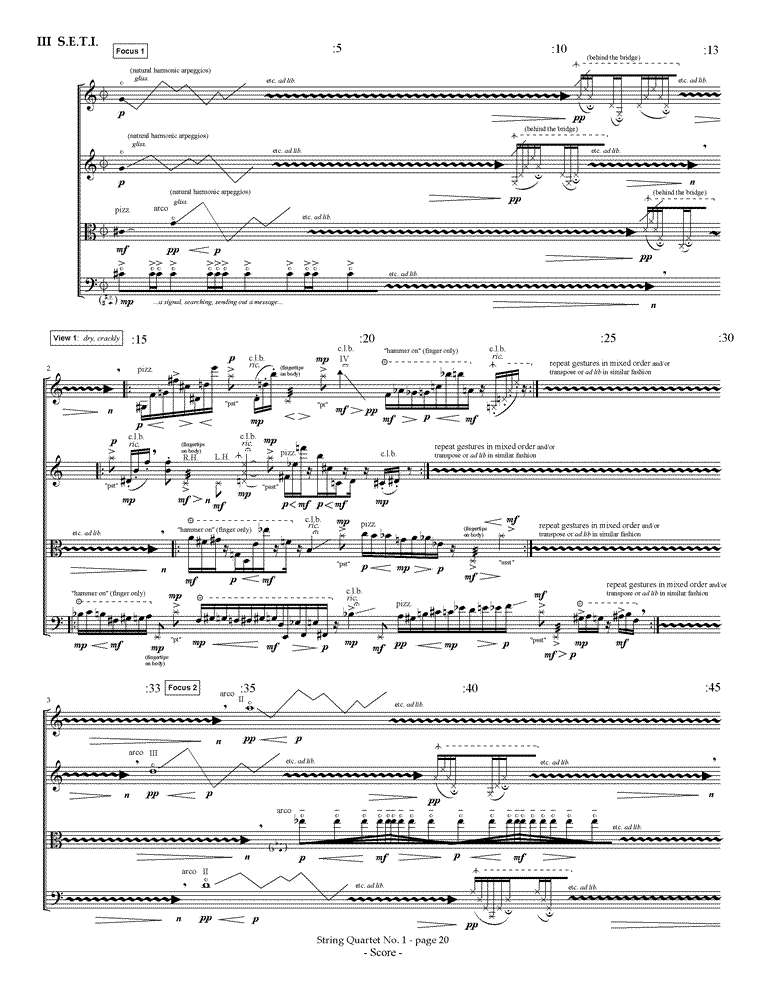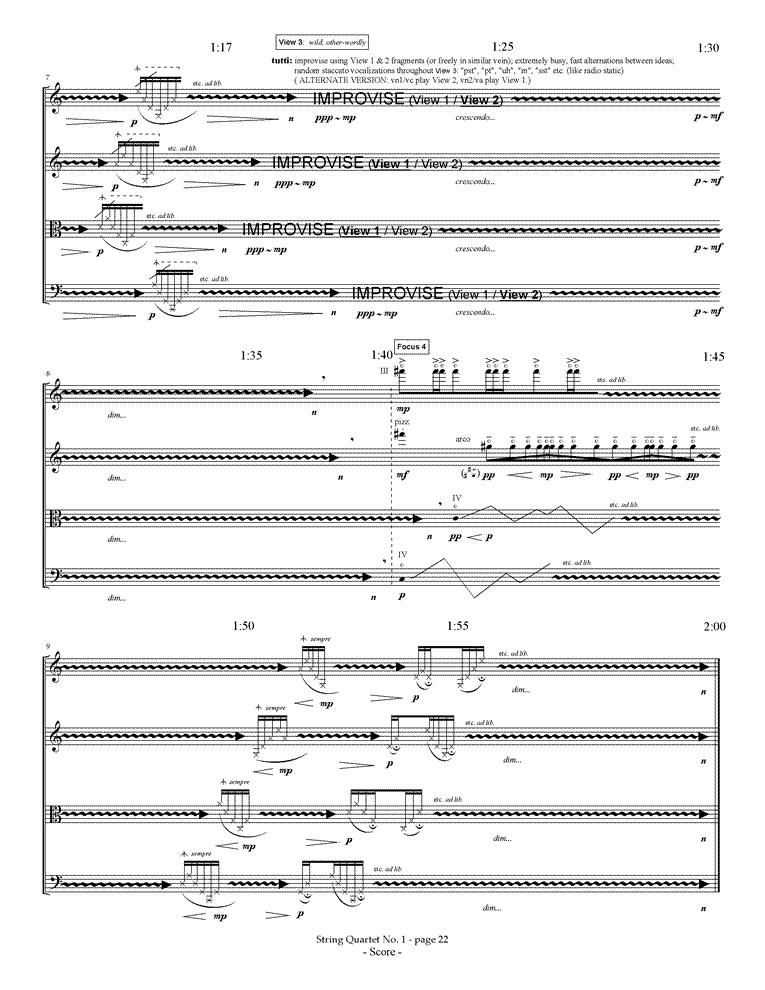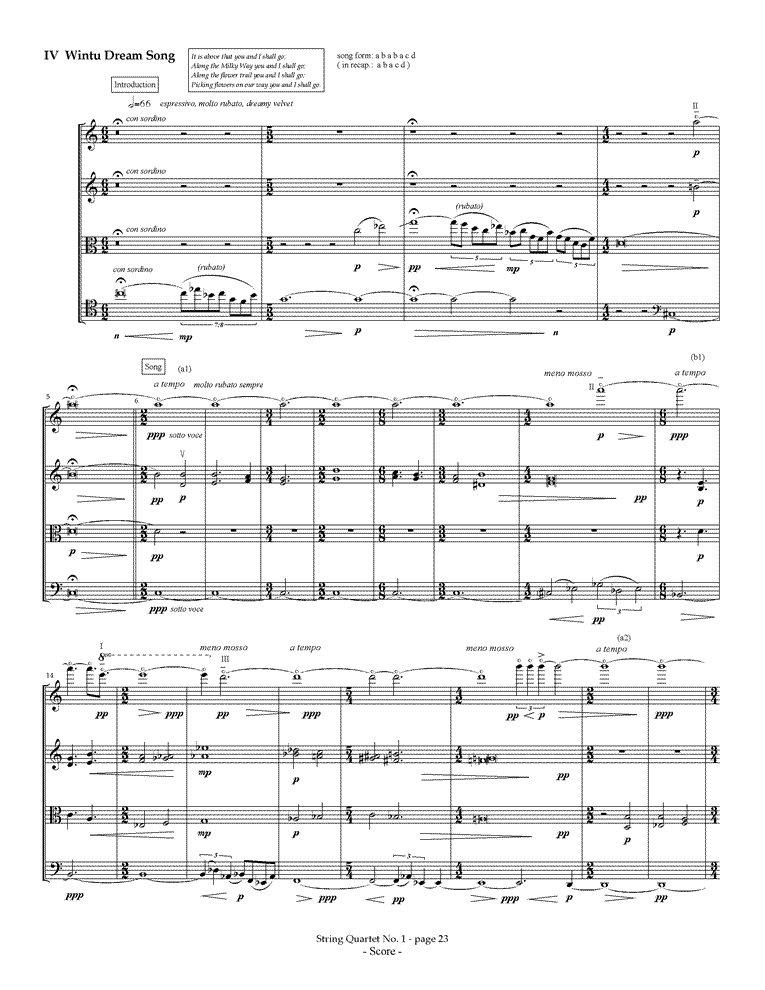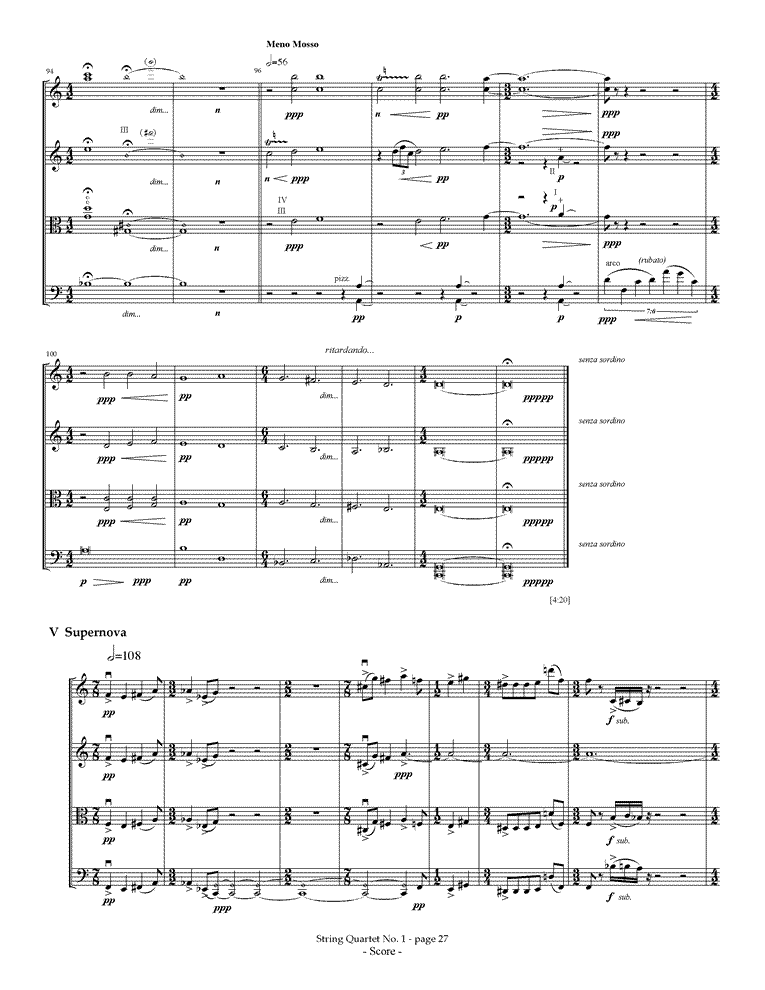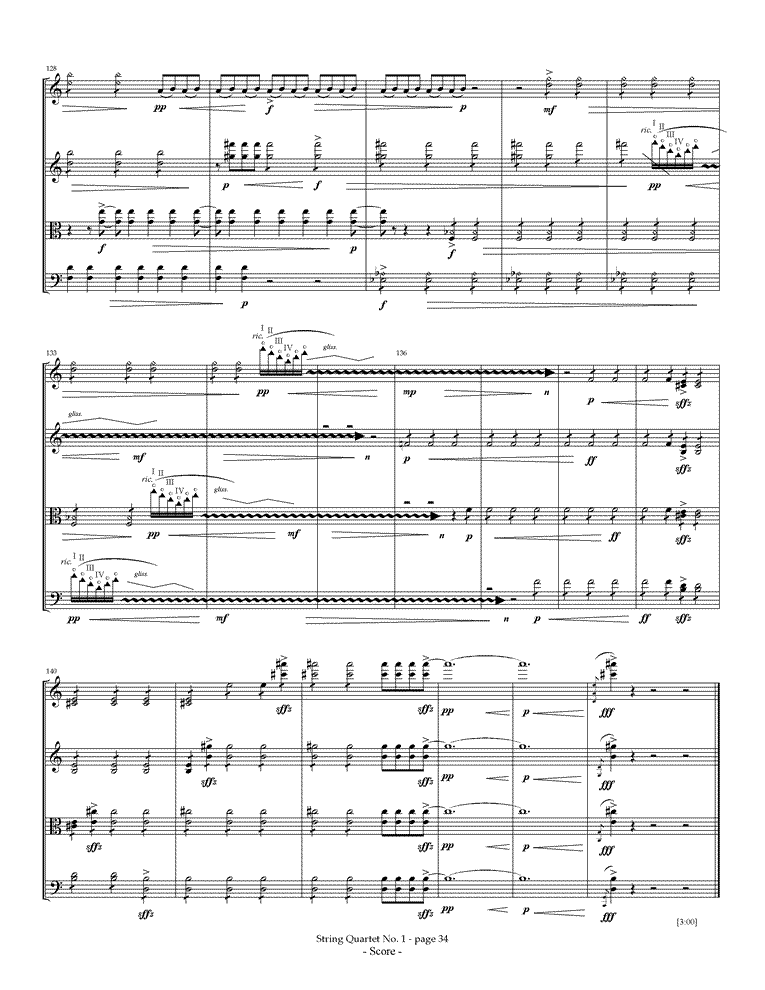String Quartet No. 1 "Astral"
(2008)
- Voyage [5:20]
- Starry Night [3:30]
- S.E.T.I. [2:00]
- Wintu Dream Song [4:40]
- Supernova [3:00]
duration: 20 minutes
premiere: April 13, 2009, The Orion String Quartet
other performances include:
2014 Tanglewood Festival of Contemporary Music (reviews)
2011 Foros de Musica Nueva, Mexico City, Jose White Quartet
premiere performance (Orion). scroll tracklist for all five mvts.
Perusal Score
Analysis
Written for and dedicated to The Orion String Quartet
Program Note
Beginning work on a piece for the Orion String Quartet, and taking a cue either from the group's name or perhaps from gazing upwards on evening strolls around the MacDowell Colony in rural New Hampshire, I decided to focus on the stars, composing an "Astral" quartet, movements of which would look at stars and space in various ways. Though the movements are somewhat independent, they do share musical elements and together are balanced on the curious middle movement. Like our galaxy, the quartet has a spiral structure, both in the shape of an eight-pitch 'spiral motive' and in the duration of the movements (roughly 5'-3'-2'-4'-3'). The 'spiral motive' is built by combining a few transpositions of the 'root motive' - a group of three pitches separated by a major second and minor third, variations of which are heard frequently in the melodic lines. The 'root motive' is also reflected in the overall tonal progression: G-A-(G)-E. One other recurring element, first heard in the opening bars, is a group of three evenly spaced attacks, a representation of Orion's Belt, the tight grouping of three stars lined up in the Orion constellation.
Voyage is a microcosm of the entire work, presenting five sections in palindrome form, introducing the important motives of the work, and imagining a flight through space, complete with syncopated asteroids and transitory worm holes (!) In the quiet center of the movement, we glimpse the traveler's capsule interior before hurtling through
space once more.
The 'three stars in a line' rhythmic motive is perhaps most clearly heard in Starry Night, sounding as quiet bell tones here and there in an introspective movement that briefly erupts in turbulence reflective of its namesake by Van Gogh.
S.E.T.I. is named after the organization founded by Carl Sagan that searches for signs of galactic life in radio transmissions. The music alternates between four Focus sections and three View sections, an aural depiction of the search for extra-terrestrial intelligence through the giant radio telescope at Arecibo.
Wintu Dream Song sets a Native American funeral song text of the west coast's Wintu tribe:
It is above that you and I shall go;
Along the Milky Way you and I shall go;
Along the flower trail you and I shall go;
Picking flowers on our way you and I shall go.
After an opening incantation by cello and viola, the song is heard twice, first in the traditional form (a-b-a-b-a-c-d), and then after a transition, in an abbreviated form (a-b-a-c-d). The top voice of the chorale-like texture is fairly repetitive and tonal, following the text closely. One might almost be able to sing along the second time!
Supernova begins with music of constrained energy, explodes in a wild development of earlier ideas and then dissipates into the expanse of space. In a tip of the hat to galactic hitchhiker Douglas Adams and his answer to the Ultimate Question, the final chord arrives with 42 strokes.
David Dzubay, Feb. 11, 2008
This work was begun at the MacDowell Colony in Peterborough, New Hampshire, and was completed while in residence at Copland House, Courtlandt Manor, New York, as a recipient of the Aaron Copland Award.
CD Recording
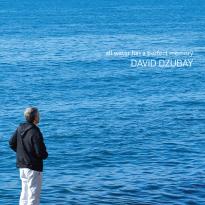 Innova 011 all water has a perfect memory
Innova 011 all water has a perfect memory
Orion String Quartet
available at INNOVA, Apple Music, Spotify, etc.


